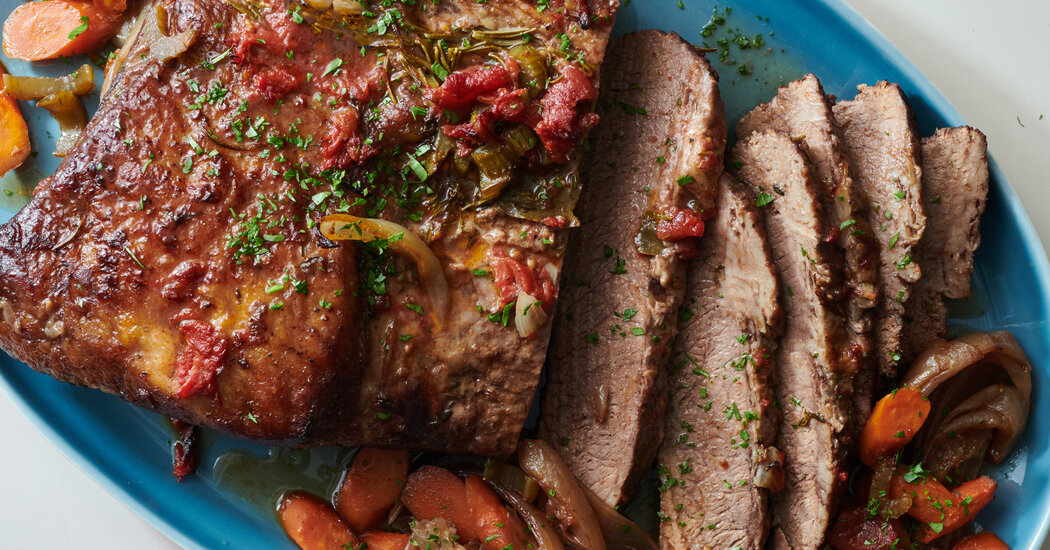In 1980, my husband Allan and I hosted our first Passover Seder at our home.
There were about eight of us: my husband’s Uncle Henik, who had numbers from Auschwitz on his arm; my Polish in-laws who’d had to flee to the Soviet Union; a few friends; and my daughter, still a toddler, racing around making us all laugh.
We sipped wine from the silver bar mitzvah cup my father had brought from Bavaria, but the rest of the tradition came mostly from my husband’s family. In my more assimilated German family, we would have started the Seder with Manischewitz gefilte fish cut into small pieces with toothpicks and herring in cream sauce. But at this first Seder, where I learned how traditions are adapted, how each family creates their own, and the compromises of marriage, it was my husband’s Polish Jewish traditions: a platter of gefilte fish with carrots in the eyes, sweet Manischewitz.
At Passover, the Seder table becomes an altar. Each family’s voyage personalizes the holiday, bringing with it customs and culinary adaptations of recipes. As our world gets more fluid, tradition differentiates each of us, in a good way, from everyone else. And yet, sometimes traditions need freshening up.
Once a spring festival of rebirth in the desert, Passover goes back thousands of years and has always been a ganze production, a big deal, as my mother used to say. The original menu, as outlined in the Book of Exodus, consisted of maror, which we know as arugula and later came to represent the bitterness of enslavement; unleavened bread (matzo), round and baked in an open fire; and a whole lamb roasted before dawn. That’s it. No haroseth, no gefilte fish, no chicken soup, no matzo brittle.
These days, in addition to the bitter herbs, parsley or karpas, symbolizing the fruit of the earth that awakens in spring, are now dipped in saltwater to remind us of the tears of enslavement. A hard-boiled egg, burned in the oven or with a match, represents birth and rebirth. A roasted lamb or beef shank bone, chicken leg or broiled beet (for vegetarians) illustrates the festival sacrifice.
And, of course, also at the table there’s often that traditional gefilte fish, though the approach has changed over the decades. Still, I feel there is something even mystical about making it.
Take my mother-in-law’s method. She taught me to mold ground pieces of pike, carp and whitefish into oval gefilte fish just as she had in Poland before World War II. She insisted on cooking the fish dumplings for 2½ hours. Early on, I reduced the time to just 20 minutes. After all, cooked is cooked.
I still make my version each Passover with friends during what we call a “gefilte fish in,” lugging pots, ground fish, ingredients and recipes to make the fish balls. But today, this Eastern European favorite has fewer and fewer takers, so I sometimes replace it with a salmon or halibut terrine, or a simple yet tasty smoked whitefish salad — served with matzo, rather than bagels — for one of the appetizing courses.
For years, our Seder ended with my father’s favorite chremslach, a matzo fritter with which he had grown up in Germany; as well as a kiss, also called a Schaum torte, essentially a large meringue with strawberries, an emblem of spring piled on top. Recipes for the torte, carefully handwritten in German, go back generations in my father’s family. My mother learned to make it from the German-Jewish-inspired “Settlement Cookbook.”
Tradition though it was, I always found the torte too sweet, so while visiting my son’s new in-laws in Denmark, I was so pleased when Eva, David’s future mother-in-law, served a similar meringue. Hers, called Eva’s cake, was filled with bitter chocolate and roasted hazelnuts to cut the sweetness. Now that torte, in a Danish family for generations, is part of our family’s Seder.
In my decades as a food writer, I have been fortunate to host many different and special Seders. At one particularly memorable Seder, about 10 years ago, more than 40 people gathered and, after dessert, we watched the children in the annual Passover play, a family tradition started decades ago. When it was over, there was a stunning silence, and I sensed that no one wanted this evening to end. It wasn’t just a dinner party. It was a sacred space.







